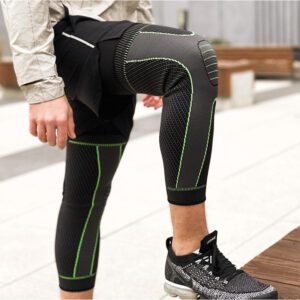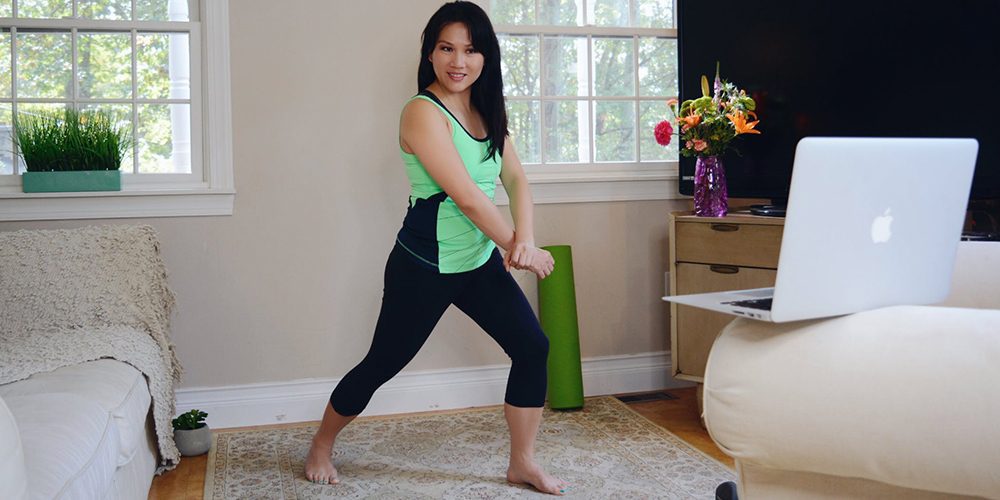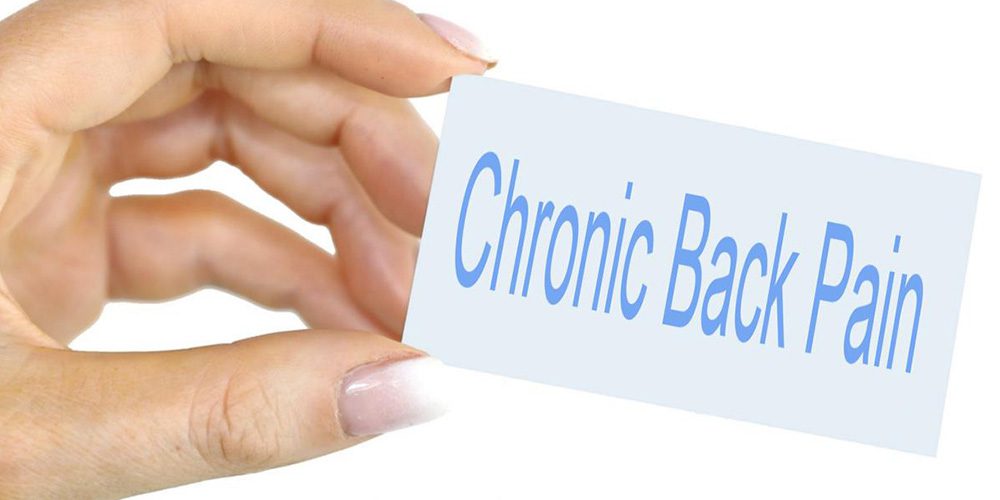Starting an exercise routine is never easy, but it’s not impossible. If you’re reading this article, chances are you want to start exercising for health reasons or because you’ve hit a plateau in your weight loss efforts and need to kick things up a notch. The good news is that there are ways to make starting easier and keep going without too much trouble. Let’s discuss some of the best advice for getting started with an exercise routine while we’re at it!
How do you start exercising if you are lazy?
First, don’t beat yourself up. People have a tendency to want to get in shape right away, but it takes time and you need to start slowly. It’s also much better than just giving up. Experts recommend that you take small steps when getting into an exercise routine for the first time — or if you’re coming back after a long break. For example, you can work in some exercise by parking a few blocks away from your destination or taking the stairs instead of the elevator at work. As for staying motivated, experts suggest setting small goals and rewarding yourself when you achieve them so it’s something to look forward to.
Exercising isn’t all physical though! What about healthy eating?
Of course! While it’s important to exercise regularly, healthy eating is just as important. You can go through the whole routine of exercising and even lose weight, only to gain it all back (and more) when you start eating unhealthy again. Get your diet under control by avoiding junk food and high-fat fare like fried food; eat lots of fruits, vegetables and lean meats instead. Make sure you drink plenty of water throughout the day to keep your system hydrated too.
How can I stay motivated?
Staying motivated is much easier when you have a workout buddy! Work out with a friend or spouse or even take up a sport that you can play together. If you’re trying to lose weight, it’s much easier to stay motivated when you have someone who is in the same boat as you. Working out with a buddy also helps hold each other accountable to get regular exercise.
How much exercise should a beginner do?
How much you should exercise depends on your fitness goals. To stay active, most experts recommend exercising for at least 30 minutes a day, five days a week. If you’re just starting out with an exercise routine, it’s best to ease into it gradually by only working out for about 10 to 15 minutes during the first week. You can build up your endurance by working out for about 20 to 30 minutes after a few weeks.
If you don’t want to go to the gym, what do you recommend?
Just because you don’t want to join a gym doesn’t mean it’s time to give up on exercise! There are lots of ways that you can get in shape without having to spend a lot of money. You can look for local exercise classes that you can take or use websites to find workout buddies who want to do the same things as you. If you enjoy being outdoors, sign up for a fun run in your area where you can go running with other people and even have some company while doing so!
In addition to these tips, make sure to consult with your doctor before starting an exercise routine if you have any medical conditions or plan on doing intense workouts. And finally, always remember that it doesn’t matter how old you are – everyone should get some kind of regular exercise!
How do I start exercising after a year of inactivity?
Getting back into an exercise routine doesn’t have to be hard if you take it slowly. Experts recommend that you start with walking or biking; these are exercises that pretty much anyone can do, even seniors and people with disabilities! Make sure to talk to your doctor before starting any workout regimen since you could hurt yourself if you don’t ease back in. If you can afford it, consider hiring a personal trainer to help motivate you and push you past your comfort zone!
What is a good beginner exercise routine?
Break your workout up into ten-minute increments so you don’t feel overwhelmed by having to exercise for 30 minutes. Stretching is always a good place to start before beginning your actual workout; take about five minutes to warm up first. Vary your workout so that you hit each muscle group at least once per week but keep it light. You don’t want to risk hurting yourself or getting discouraged so keep your goals reasonable!
What are some good beginner exercises?
Some of the best exercises for beginners include walking, jogging, biking and swimming. You can also try using machines at the gym that aren’t too strenuous but still give you a good workout; if you’re just starting out, stick with machines that you can use for a few weeks at most. Always make sure to do some stretching before and after exercising as well. And last of all, avoid doing any exercises that cause pain since this means there is a good chance you’re going too hard on your body.
Recommended starting routines by age group
- Teens/parents of teens: Start with ten minutes per day and work your way up. Look online for local workout classes that you can do together or consider hiring a personal trainer to push you past your comfort zone.
- College students/young professionals: If you’re in good shape already, stick with exercising twice a week for 20 minutes each time. If you have any medical conditions or are out of shape, start with 10 minutes per day and work your way up to about 30 over the course of a few weeks. Find ways around the gym that don’t require too much money.
- Best aged people (30-60): Start with 10 minutes per day and build your way up to about an hour over the course of a month or two. Again, look online for classes or workout buddies who want to do the same things you do. Also, make sure to get your doctor’s ok before starting any exercise regimen.
- Older adults/people with health problems: Start slowly by taking it easy for the first week and gradually build up to 20 minutes of exercise at a time. Try using machines that don’t require too much energy or other exercises that you can walk or bike to. Build up your endurance by starting with five-minute increments and working your way up to around 30 minutes. Always make sure you talk to your doctor before beginning any exercise regimen.
- Seniors/elderly: Start with five minutes per day, build your way up to about half an hour after a few weeks, make sure to consult with your doctor before starting any workout routine. If you already have a regimen, consider adding in some new machines to your workout or trying out a few different cardio activities.
How can I start working out at home without equipment?
Start with a simple regimen of push-ups and sit-ups. As you become more comfortable doing this, add in some jumping jacks to get your blood flowing faster and work on your balance by adding in some squats or trying out the wall sits that you’ve seen the more advanced athletes do. If you’re feeling ambitious, try making up your own workouts using household items as you’re inspired. If push-ups and sit-ups are too difficult, try doing some planks or simple backbends.
The most effective exercises you can do at home using your own body weight and no additional equipment include:
- Planks. Start with holding yourself up for 10 seconds, rest for 5 seconds and build your way up to about 1 minute.
- Jumping jacks. Start by doing one set of 20 jumping jacks, walk around for a bit before trying another set. Work your way up to three sets total over the course of a few weeks or months.
- Hollow body hold. Start by holding yourself up for 10 seconds, rest for 5 seconds and build your way up to about one minute.
- Mountain climbers. Start with doing ten of these at once, work your way up to 20 or more over the course of a few weeks.
- Wall sits. Start by sitting against the wall with your legs bent in front of you and try to hold this position for as long as possible. Eventually work your way up to sitting with straight legs and holding the position for 2 minutes or more at a time.
- Push-ups and sit-ups. Start by doing one set of 10 push ups and sit ups, walk around for a bit before trying another set. Work your way up to three sets total over the course of a few weeks or months.
- Squats. Start by doing half-squats with your arms stretched out in front of you, build up to full squats.
- Dips. Start by doing one set of 10 dips at a time, work your way up to three sets over the course of a few weeks or months.
- Squat-jumps. Start by doing 10 squats, without stopping jump up and land in the starting squat position.
- Bicycle crunches. Start by doing one set of 10, work your way up to three sets over the course of a few weeks or months.
What exercises burn the most belly fat?
The most effective exercises you can do to burn belly fat include:
- Knee-tuck jumps. Start by doing 10 knee tucks at a time, rest for 5 seconds and build your way up to 20 or more in three sets.
- Swimming. If you’re not comfortable swimming laps yet, then start with freestyle arms and doggy paddle with flutter kicks. Build your way up to swimming a full length of the pool freestyle, then add in the butterfly and other strokes until you’ve mastered them all.
- Skipping/jumping rope. Start by doing one set of 10 jumps at a time, rest for 5 seconds and build your way up to 20 or more in three sets.
- Running on a treadmill. Start by doing one set of 10 reps at a time, rest for 5 seconds and build your way up to 20 or more in three sets.
- Jumping jacks. Start by doing one set of 20 jumping jacks, walk around for a bit before trying another set. Work your way up to three sets total over the course of a few weeks or months.
- Planks. Start by holding yourself up for 10 seconds, rest for 5 seconds and build your way up to about 1 minute.
- Mountain climbers. Start by doing ten of these at once, work your way up to 20 or more over the course of a few weeks.
- Biking/Cycling. Start by riding your bike for 20 minutes and work your way up to an hour using interval sprints.
- Rowing. Start by rowing forwards for one set of 10 reps, rest for 5 seconds and build your way up to 20 or more in three sets.
- Jump squats. Start by just jumping up and down in place for a few minutes each day, then add some squatting into the mix when you feel comfortable enough. Work your way up to doing
Takeaways
Start wherever you’re comfortable and build your way up from there.
Don’t expect results overnight, remember that slow and steady wins the race.
Do cardio exercises year-round, not just in the summer to help maintain a healthy lifestyle for years to come.
Remember – it’s never too late to start.
I hope you all enjoy reading my article! Please let me know if I can improve anything in the comments below.






















